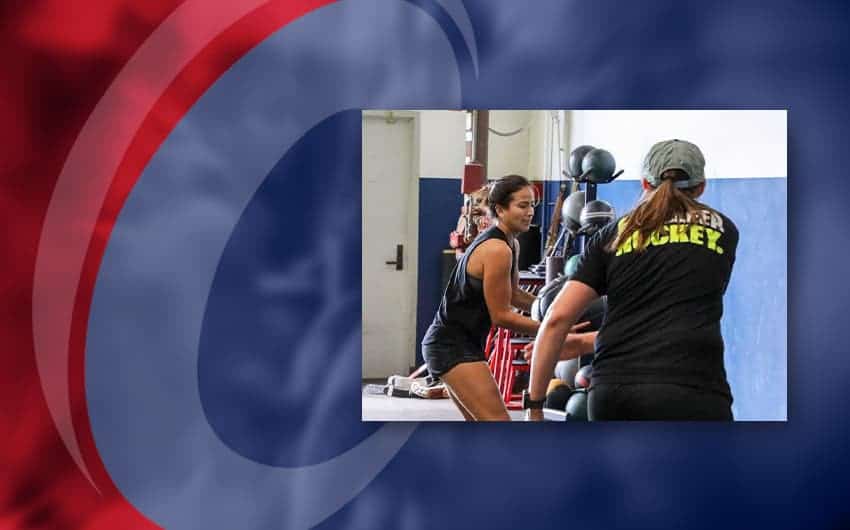Roller hockey can seem very similar to ice hockey at times, but can also seem vastly different. Roller hockey typically has less players on a team than ice and only four skaters on each side during play. One would think, less players would mean shorter shifts on the ice, but the opposite is the norm. In addition, ice hockey is a more physical sport that includes checking at many levels. Laura Veharanta, Captain of the 2019 World Champion USA Roller Hockey Team stated “I’d say the biggest difference in ice hockey is more explosive due to ice skates/edges, roller skates make it difficult to be more explosive and the transitions are much harder. Your feet always feel a lot slower than what you’re used to when you transition to roller from ice. It’s probably because the roller skates are a little heavier and bulkier, and you don’t have the advantage of edges like on an ice skate.”
So how does dryland training differ between roller and ice hockey? This depends on what part of the season you are in and if your focus is on roller or ice. Many ice players, especially in Southern California play roller for a change of pace, work on their stickhandling skills and have some fun. For these players, I would continue to train as an ice player. For those that are strictly roller players, there still will be a lot of similarities including single leg strength, power and core stability, but there will be some differences. The main difference being the conditioning aspect. Most ice hockey players have a shift length of 30-60 seconds with multiple bursts of energy, where as the roller player shift is typically double that with less real bursts. Roller hockey players need to sustain energy for a longer period of time so they may need to alter their program for longer spurts during their anaerobic conditioning. One way to accomplish this is to increase work time and decrease rest periods. For example, an ice player may do 10 second sprints on the bike at maximal speed with 20-30 seconds rest. A roller player may be better off with 30 seconds of submaximal sprint work with a 10-20 second rest. Though the programs will be similar, a well thought out plan will take into consideration the specific demands that will be placed on the athlete during competition and throughout the whole year.
Chris Phillips is an Athletic Trainer and Strength and Conditioning Specialist with over 25 years experience in professional sports including 8 years in the NHL with the Mighty Ducks and Capitals.

